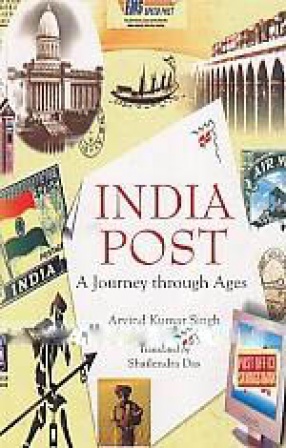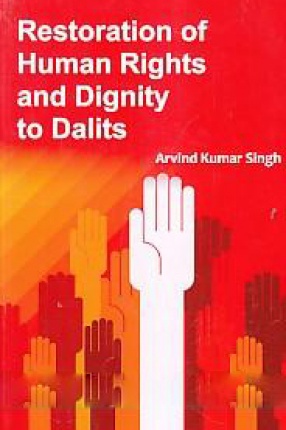
Arvind Kumar Singh

Showing all 16 books












Reputed to be one of the oldest living temples of the world, Mundeshwari is also the oldest temple of Nagar/North Indian style in the outskirts of Varanasi. Its significance increases further when one finds its composition to be governed by two diverse religious traditions—the 'Elite' and the 'Adivasi'. The shrine is an example of acculturation, and is a happy blending of the Brahmanical and Adivasi religious ideologies and practices. An ancient cultural ...

Buddhism is a religion of Compassion and Philosophy of Being and Existence. Animal does occupy an important position in Buddhism. Animal maintains a delicate balance between delicate balance between eschatology and utopia on which depends the very survival of mankind. The book deals with this complex problem from Buddhist philosophical perspective. The examination and analysis of this complex problem reveals and unfolds the new religion philosophical dimensions ...

The renowed city Gwalior is well-known for its historical and religious significance. The legacy survives in form of prehistoric and historic archaeological materials, invincible fort, amazing places, opulent historical buildings, cemeteries, rich literature, various inscriptions, and so on. Inscriptions are vital source of information for chronological reconstruction of all aspects of Indian history and the present study of the Gwalior inscriptions is an ...




The Gahadavalas occupy a very important place in Indian history. They ruled for over a century (ad 1089-1097), over a vast region of North India, which extended from the western bank of Yamuna in the west to Patna, Monghyr and Bodh Gaya in Bihar in the east. It extended from the foothills of the Himalayas in the north to Baghelkhanda in Madhya Pradesh in the south. The question of the inscriptions of the Gahadavalas and their times has been summarily dealt within ...


Southeast Asia consists of two geographic regions: the Asian mainland, and island arcs and archipelagoes to the east and southeast. The mainland section consists of Cambodia, Laos, Myanmar, Thailand and Vietnam. The maritime section consists of Brunei, East Timor, Indonesia, Malaysia, the Philippines and Singapore. Buddhism is the main religion in Southeast Asia. Thailand, Vietnam, Cambodia, Laos, Myanmar are Buddhist countries.This book has some initial chapters ...

This book is about Buddhism in South Asia. How Buddhism started in this part of the world and later spread across the world, this book covers these topics. Buddhism originated in this part of the world and is the state religion of the countries like Sri Lanka and Bhutan and Buddhists are in good number in other South Asian countries.This book starts with the introduction of Buddhism and further traces the development of Buddhism in South Asia along with its ...

Buddhism has a large number of followers in some countries of Far East Asia especially Japan, Korea, China and Mongolia. Different forms of Buddhism are in use in these countries like the Zen Buddhism in Japan. History of Buddhism in Far East Asian countries, development of Buddhism, rituals and cultures of Buddhism in these countries and other aspects of Buddhism are the theme of this book.Various kinds of customs and traditions are followed by Buddhists in ...


The uncontrolled population growth and ever increasing demand for natural resources compounded with careless application of modern technology in development activities having resulted into fast deterioration of the natural environment at various levels--global, national, regional and local. The study is organised into six chapters; the chapter one--the study area; Gorakhpur district. Chapter two brings out the growth of population along with important ...

Vinayak Damodar Savarkar, commonly known as Swatantrya-veer Savarkar was a fearless freedom fighter, social reformer, writer, dramatist, poet, historian, political leader and philosopher. He remains largely unknown to the masses because of the vicious propaganda against him and misunderstanding around him that has been created over several decades. Savarkar credited with developing the Hindu Nationalist Political Ideology of Hindutva. Commonly addressed as Veer ...

Lajpat Rai was one of the three most prominent Hindu Nationalist Members of the Indian National Congress, who fought for, and gave their lives during the Indian Independence Movement in the first half of the twentieth century. The other two were Bal Gangadhar Tilak of Maharashtra and Bipin Chandra Pal of Bengal. Collectively, they were dubbed Lal-Bal-Pal, and formed the Hindu faction of the Indian National Congress, as opposed to the moderate faction led first by ...
